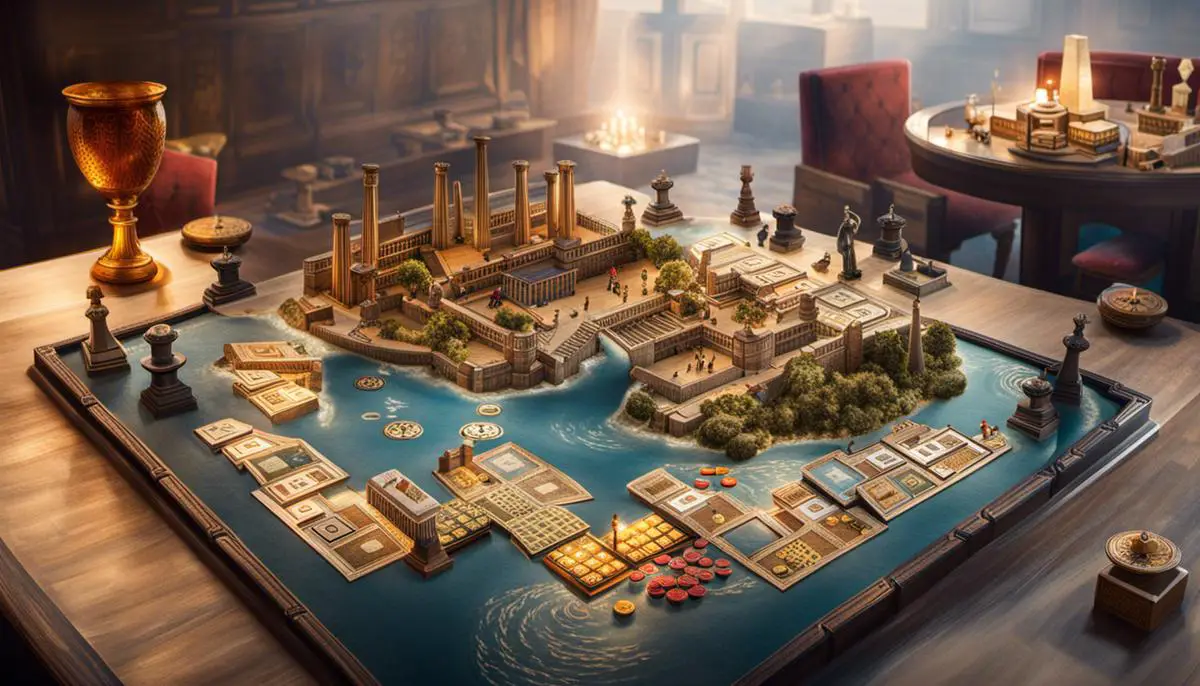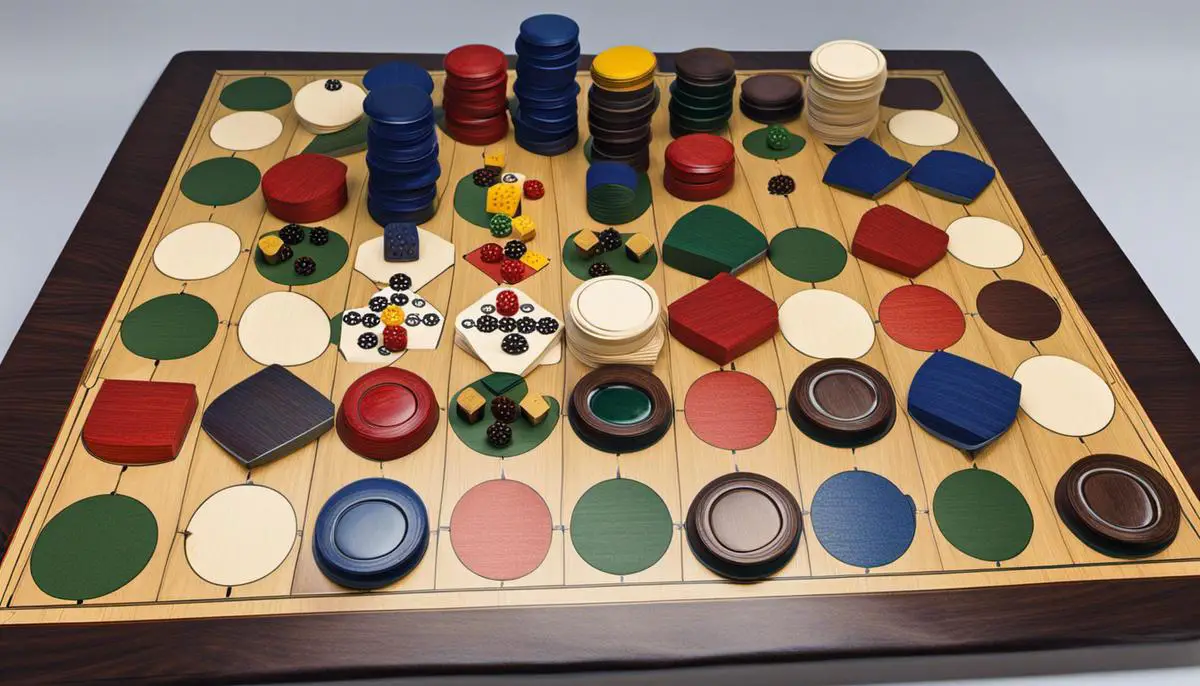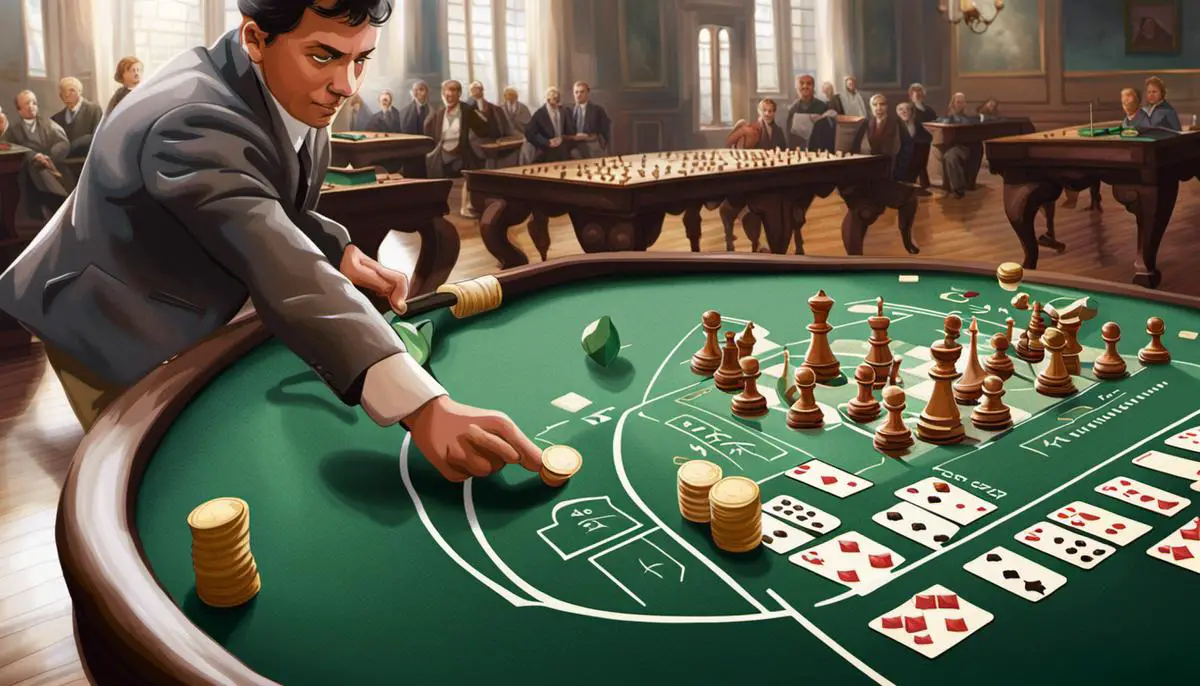Unearth a forgotten pastime from the annals of ancient Greece as we delve into Petteia, a strategic board game adored by inhabitants of a bygone era. A valuable artifact of human leisure and intellect, Petteia’s draw lies not only in its historical significance, but also in the complex strategical challenge it presents. Our exploration starts from the game’s humble origins and journeys into its subsequent evolution and cultural impact, providing a comprehensive understanding of the game’s relevance in antiquity. As we venture further, you’ll uncover how to maneuver within the confines of the game’s rules, skewer your opponents with deadly attacks, and formulate formidable defenses. In the quest to master this fascinating artifact of leisure, we’ll offer you the understanding not only of how Petteia was played, but also the strategies necessary to conquer it.
Understanding Petteia’s History
Origin of Petteia: A Glimpse Into Ancient Greece
Petteia originated as a strategy game in ancient Greece, reportedly making its appearance around the 5th century BC. It is noteworthy for its complexity and strategic components, which stood out even amidst the vibrant gaming culture of ancient Greece. Evidence of Petteia has been found on artifacts, in literature, and in historical records, solidifying its status as a prominent pastime among the Greeks. The game held high societal value and its importance often transcended recreational entertainment, as it was often used in education to teach tactics and strategy to young boys.
Development of Petteia: A Layered Transaction
While the exact rules of Petteia are mostly lost to history, scattered references throughout ancient literature provide some insight into the game’s mechanics. Presenting a stark comparison to the simple games of chance that were prevalent in antiquity, Petteia was a pure game of strategy. It involved a variable number of players and was played on a grid board with a varying number of squares. The method of capturing opponent’s pieces was unique and varied on the different instances of the game, making Petteia a highly adaptable game.
Petteia’s Influence: A Timeless Legacy
Petteia’s legacy extends beyond antiquity and into modern times. Not only did it set the groundwork for many board games we cherish today, like chess, but it also played a huge role in nurturing analytical and strategic thinking. Petteia, in all its complexity and adaptation, required players to think multiple moves ahead, practice foresight, strategic planning, and patience. These skills continue to form the foundation of strategic games even today.
The Significance of Petteia: The Inherent Cultural Subtext
The cultural significance of Petteia in ancient Greece cannot be underscored enough. Beyond simply being a pastime activity, it was perceived as a test of wit, intellect and strategic prowess among the Greeks. It was also taught to young boys as a part of their curriculum, serving to shape their analytical thinking and problem-solving skills. Furthermore, references of Petteia in ancient Greek literature often symbolized deeper themes and societal commentary. Its widespread popularity across different strata of society and over centuries speaks volumes about the cultural depth and importance of Petteia.

Grasping the Basic Rules
Setting Up The Game
Petteia, also commonly known as the game of pawns, was one of the most popular games in ancient Greece. It is a competitive game for two players, and its setup is similar to chess or checkers. To begin, you will need a standard 8×8 game board and two sets of 16 pieces, one for each player. Players must then arrange their pieces on the second and third rows of the board on their respective sides. This arrangement remains constant throughout all versions of Petteia and is the starting point of any game.
Rules for Movement
Each turn, a player may move one piece in any direction along a row or column, much like the rook in chess. However, unlike in chess or checkers, there is no limit to the number of squares that a piece may move, as long as it is not blocked by another piece. Diagonal movements are not permitted in Petteia. Players can choose to move any of their pieces during their turn, providing it does not land on a square occupied by their own piece or an opponent’s piece.
Attacking and Defending Gameplay
Petteia boasts a unique attacking and defending system. Instead of ‘jumping’ over the opponent’s pieces to capture them, as in checkers, players capture opponent’s pieces by trapping them between two of their own pieces, either vertically or horizontally. A player can capture multiple pieces in one move if the move results in enemy pieces being sandwiched between the player’s pieces on two different axes. When a piece is captured, it is removed from the board.
Understanding Basic Strategies and the Goal of the Game
Petteia is a game of strategy and evasion. The key to success lies in openness, control, and awareness. Openness refers to ensuring your pieces are not blocked or cornered by your opponent. Control means maintaining balance and flexibility with your pieces, ensuring that you can attack or defend as needed. Awareness involves keeping track of your opponent’s pieces and potential moves.
The goal of Petteia is to capture all of the opponent’s pieces. To win, a player must use their turns to strategically position their pieces in such a way that they can trap and capture the opponent’s pieces, while at the same time protecting their own pieces from being captured. With practice and strategic thinking, you can become a skilled player of this ancient Greek board game.

Advanced Strategies and Tactics
The Strategy of Positioning in Petteia
In playing Petteia, understanding the positioning of your pieces is critical. Place your pieces in a way that limits your opponent’s options and puts you in an advantageous position. This often involves creating ‘sandwiches’ or ‘traps’ in which an opponent’s piece is surrounded on two sides, leading to its capture. It is a game of encirclement where trapping your enemy plays a significant role. Strategically placing your pieces can also block your opponent’s pieces, impeding their movement, and restricting their maneuvers.
Blocking Your Opponents
A key tactic in Petteia involves effectively blocking your opponent’s moves. This necessitates an understanding of the game board, prediction of your opponent’s moves, and effective use of your own pieces. A successful block could leave a piece isolated and vulnerable, offering you the chance for a capture. However, blocking usually involves some risk, as a piece involved in a block is often exposed to counterattacks. Therefore, committing to a block should be carried out with careful consideration of your overall game strategy and the potential risks and benefits.
Attacking Strategies in Petteia
In line with the principle of positioning, the more you understand how your pieces and your opponent’s pieces interact, the more effectively you can launch your attack. Effective attacks most often involve the key mechanics of ‘sandwiching’ – surrounding an opponent’s piece on two sides by moving your pieces such that the opponent’s piece is trapped between them. This requires careful planning and strategic thinking. Avoid attacking just for the sake of attacking and remember that each moved piece can potentially be threatened by your opponent.
Defensive Tactics in Petteia
Just as attacking is important, so is maintaining a solid defense. Good defensive tactics also involve keeping your pieces grouped together and avoiding isolation. An isolated piece is an easy target for the opponent. If your opponent is making enterprising moves, consider moving your pieces near the edge of the board in order to limit the directions from which your opponent can corner you. Additionally, always be prepared to respond and adapt to changes in the game, and utilize every opportunity to capture your opponent’s pieces.
Practicing Gameplay Scenarios
While the theory is useful, practice makes perfect. Familiarize yourself with Petteia gameplay scenarios – from the early stages where positioning matters most, through the middle phase where strategic blocking becomes essential, to endgame tactics where accurately predicting your opponent’s placement can secure a game-changing capture. This methodical approach will help you plan ahead, anticipate your opponent’s actions and adapt to different strategies. Repeatedly doing scenario practices will also enhance your understanding of the game, its tactics and strategies.

After a detailed exploration into the exhilarating world of Petteia, we hope that you have developed an enriched understanding and appreciation for this enduring piece of ancient Greek culture. As we delved into its captivating history and analyzed the fundamental rules, the intrinsic beauty and complexity of this ancient strategy game sincerely came to life. Moreover, with the insights gained from advanced strategies and tactics, may your pieces move with precise intent on the age-old board of Petteia. More than just a game, it’s a captivating journey into the past, rekindling a forgotten form of strategic warfare that has undeniably influenced modern board games. In mastering Petteia, you are breathing life into a corner of antiquity and ensuring the longevity of a cherished pastime from the annals of human history.
Frequently Asked Questions: Petteia Board Game
A: Petteia, also known as “The Game of Cities,” is an ancient board game played on a grid. It involves capturing opponents’ pieces using strategic movement.
A: In Petteia, two players move their pieces orthogonally on the board. The goal is to encircle your opponent’s pieces between your own, capturing them in the process.
A: Petteia was played in ancient Greece and other civilizations, reflecting strategic thinking and tactics used in warfare and city planning.
A: Variations of Petteia were played in different cultures, highlighting its widespread popularity and adaptability across ancient civilizations.
A: Petteia develops strategic thinking, spatial awareness, and the ability to anticipate opponents’ moves. Players must create opportunities to capture while defending their pieces.
A: Yes, Petteia’s focus on capturing opponents’ pieces and encircling them mirrored military strategies, providing players with a mental exercise akin to battle tactics.
A: Archaeological findings have uncovered game boards and pieces related to Petteia, offering insights into its historical context and gameplay.
A: Enthusiasts and historians have recreated Petteia based on historical sources, enabling players to experience the ancient strategic gameplay of this intriguing game.
A: To learn more about Petteia, explore historical texts, archaeological discoveries, and modern resources dedicated to ancient board games and their rules.
A: Yes, modern adaptations and digital versions of Petteia are available for those interested in experiencing the strategic gameplay of this ancient board game.
A: Games like Latrunculi shared similarities with Petteia, focusing on capturing opponents’ pieces through strategic movement on a grid.

